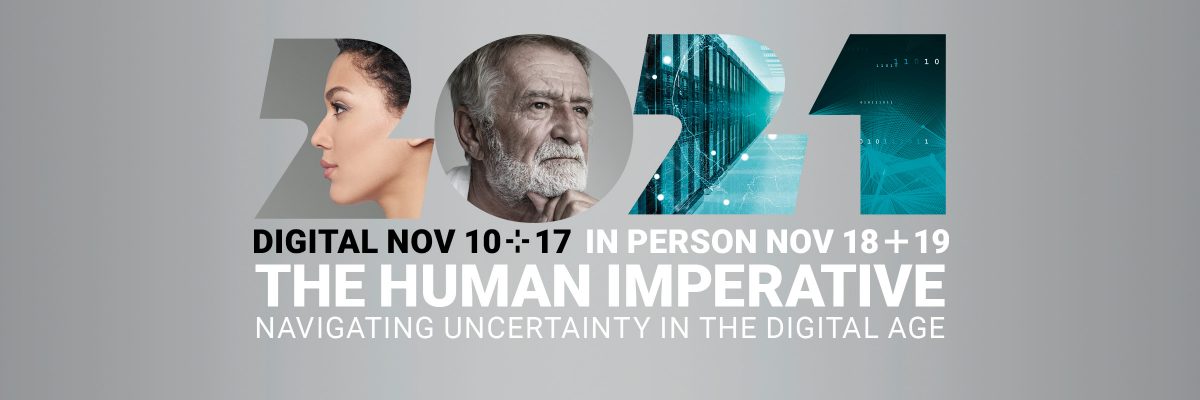
After collecting and studying innovation data from over 1,000 companies in 62 countries, I’m often asked whether Small and Midsize Enterprises (SME) are more innovative and entrepreneurial than larger corporations. In times when the market dynamics, technology development, and diffusion are faster then ever, it is a natural question. So let´s dig into some key findings and see what we can learn.
All companies have a conscious or unconscious strategy, leadership, culture, capabilities, and competencies they use to improve and innovate business internally (e.g. processes) and externally (e.g. value proposition). According to Steve Coley (2009) the innovation work can be divided into three parallel Horizons, each one representing an S-Curve. The first Horizon 1 (H1) is about incremental innovation in today’s business, extending the existing S-Curve of the company. Horizon 2 (H2) is about expanding and building new business (the next S-Curve) through innovations. Horizon 3 (H3) is an explorative approach to future S-Curves, to be commercialized in H2, ending up in H1. Another source on the theme, O’Reilly III and Tushman (2004), talks about being able working ambidextrously with incremental and radical innovation at the same time.
The insight of dividing innovation work into different Horizons in order to manage it effectively is, in my experience, often well known at C-level. At the same time, large H1 projects are prioritized to the extent that they are causing internal traffic jams among projects sharing resources. This results in projects that are too numerous, too big, and often less value-creating. Instead, companies can utilize common resources more optimally, improving and caring for today’s profit (H1), developing tomorrow’s profit and market shares (H2) and learning for the future (H3).
Besides killing zombie projects in H1 that otherwise would not die, it is about using and developing the leadership, culture, capabilities, and competences most efficiently. The key lies in understanding how to organize and transform into an organization that’s able to work short-, mid- and long -term, maximizing the utilization of all resources from tangibles to intangibles.
Before we compare and contrast SMEs and large corporations—and what they might learn from each other—we’ll start with some key findings in the studied companies. Correlations in the data studied shown in Table A state that different Horizons call for different strategies, leadership styles, capabilities, competencies, and metrics.
In H1, where most companies put their effort (up to 99% according to many studies), incremental so called spiral staircase leadership (Table A) works. This is when leaders work step-by-step towards well-defined goals calculating ROI predicting the future.
In H2, the strategy is not to understand and respond to the market, but instead to understand needs and use technology in new ways. Platform and design thinking, prototyping, ideation, project selection, and speed are imperative capabilities. The leadership in H2 is more entrepreneurial, challenging the business model (Cauldron style, Table A), seed-funding external projects then buying them back (Pacman style, Table A), as well as acting as the gardener on a fertile field (trying out what’s working and removing what isn’t). H2 projects are measurable by working with small experiments and prototyping, building the base for cash flow assumptions.
H3 is the explorative style: needs are investigated on a deeper level and new technology used to disrupt. It’s essential here to sharpen the future possibilities with external knowledge sharing, open innovation, and co-creation. H3 projects cannot be measured by traditional methods such as ROI: it is more about exploring.
| Horizon 1 | Horizon 2 | Horizon 3 | |
|---|---|---|---|
| Scope | Core Business | Growth business | Future business |
| Strategic Focus | Exploit and optimize existing business, incremental innovation | Expanding existing and building new business, adjacent innovation | Explore options, place small bets on emerging opportunities, radical innovation |
| Innovation Strategy1 | Market Reader, Technology Drivers (incremental) | Technology Drivers (partly radical) and Need Seeker | Technology Drivers (Radical) and Need Seeker |
| Leadership Style2 | Spiral Staircase | Cauldron, Fertile Field, Pacman | Explorer |
| Capabilities with strong correlation to strategy and leadership | Clear Vision, Goal-Oriented Leadership, Core Focus, Market Insights | Platform and Design thinking, Prototyping, Speed to market, Project Selection, Ideation | External knowledge sharing, Co-Creation, Open Innovation, Anthropology, Technology Watch |
| Competencies | Fully assembled | To be acquired or developed | Requirements uncertain |
| Metrics | Return On Investment | Net Present Value based on prototyping and hypothesis | Strategic Option Value based on scenarios |
Table A. Based on the work of Ralph-Christian Ohr and Kevin McFarthing. 1 Based on Jaruzelski & Dehoff (2010). 2 Based on Loewe, Williamson, Chapman Wood (2001). All data is collected and analyzed in InnoSurvey™ (2016).
In my studies I divided the companies into two groups: SMEs and larger companies. The SMEs, unlike the larger companies, are clearly stating that they are prioritizing innovation. SMEs perceive a clearer vision, ideation, and exploration: setting the scene for H2/H3. Larger corporations perceive their strength in reading the market (H1) and selecting the right innovation projects (H2). It’s noteworthy that SMEs perceive several concomitant leadership styles (up to three) while larger corporations tend to be more uniform. Larger corporations tend to have all types of innovation strategies, which is not the case with SMEs. This illuminates why many SMEs can adapt easily to an innovation Horizon model but are strategically struggling (inflexible). Larger corporations easily change and set strategy (are flexible) but struggle with the leadership when trying to work with innovation Horizons. It seems that SMEs and larger corporations can learn from each other.
Finally, some findings are key regardless of company size. Companies stating that they apply radical innovation also apply incremental innovation, but not the other way around. It seems that radical innovators are more mature in innovation management, systematically dividing into several innovation Horizons. They are able to maintain and nurture appropriate multi-leadership and multi-strategies for optimal resource usage and value creation.
This quote from Peter Drucker summarizes it all: “Innovation is the specific instrument of entrepreneurship…the act that endows resources with a new capacity to create wealth.”
About the author:
Magnus Penker is co-founder and innovation consultant at Innovation360 Group, serial entrepreneur, keynote speaker, author, and serves as non executive director on several board of directors.


Excellent post. The first I have seen to link 3 Horizons thinking with strategy, leadership, capabilities and culture in an innovation management context. Very powerful. I wonder if like other 3 Horizons challenges if in innovation their is too much focus on both Horizon 1 and too much freedom and lack of monitoring in Horizon 3, whilst Horizon 2 initiatives do not get the attention and time they deserve. Look forward to seeing more thinking on this topic.
Thanks for the feedback Jonathan! Very interesting observation and I think it is valid for SMEs as well as for large corporations. According to my key findings, based on correlation analysis between the different mentioned concepts in the blogpost and in total 67 identified capabilities for innovation, the nature of H2 seems to strongly correlate with following identified capabilities for innovation: Platform and Design Thinking, Prototyping, Speed to market, Project Selection. In my experience several of this capabilities for innovation, especially Platform and Design thinking, is very hard to acquire which might be one of many a reasons why H2 seem to be a bit squeezed in the middle. But it if mostly likely other (and many) reasons behind this as well, looking forward to more thinking on this.
Hi Magnus – interesting article. Your Table A looks VERY similar indeed to one produced by Ralph Ohr and I in this article – http://www.innovationmanagement.se/2013/09/16/managing-innovation-portfolios-strategic-portfolio-management/ (also published on our own websites).
Do we deserve an acknowledgement?
Absolutely, no doubt! Will add that, thanks for pointing it out. Table A is also very similar to McKinsey´s Framework with H1-H3 and Metrics, People and Capabilities (Coley, 2009). The contribution in the blog post lies in the correlation analysis (based on my work) between the “Three Horizons” defined by McKinsey&Co and the work of Jaruzelski & Dehoff (2010) and Loewe, Williamson, Chapman Wood (2001) and of cause your contribution as well.
Thanks, Magnus!
”Great article, especially that SMEs can learn form large corporations and vice versa, looking forward to more on the topic”.
Interesting that radical innovators seems more mature in their strategy and leadership, something I will bring in mind as an entrepreneur.
Great blog. This was really helpful stuff. I wish you luck as you continue to follow that passion.
nice post
Thanks for the information…
Hey, what a brilliant post I have come across and believe me I have been searching out for this similar kind of post for the past week and hardly came across this. Thank you very much and will look for more postings from you.
This is a great post. This post provides quality information to the users. I’m definitely going to look into it. Really very useful tips are provided here. Thank you so much. Keep up the good work.
Finally, I found a good quality and decent post, it is very helpful to me. I am grateful and thankful for all your effort and dedication.